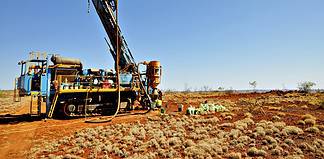The Cooperative Research Centre for Transformations in Mining Economies (CRC TiME), along with partners Fortescue Metals Group, University of WA and Curtin University, have announced a new project focusing on increasing plant nutrients in iron ore waste, enabling improved mine site rehabilitation in WA’s Pilbara region.
The 12-month project is centred around Fortescue’s Chichester Hub mine site and includes experimental glasshouse-based and laboratory testing undertaken at UWA, along with microbiology expertise from Curtin.
According to CRC TiME, the Pilbara region has a very thin layer of top soil which is essential for plant growth and is disrupted through mining.
The project will formulate a process to increase plant available nutrient levels, specifically nitrogen for this study, in mineral waste (waste rock and tailings) and stockpiled soils (subsoils and topsoil) using novel plant-microbe systems, to improve the rehabilitation post-mining.
Kirsty Beckett, Principal of Mine Closure at Fortescue, said the initiative is addressing a critical issue for the mining industry, as available topsoil is a key limiting factor in the rehabilitation of large tracts of mining affected land.
“These areas can cover up to half of some of the Fortescue’s mine sites,” she said
CRC TiME CEO Guy Boggs said post-mining landscapes required the establishment of self-sustaining ecosystems over heavily altered landscapes constructed from mineral waste.
“Effectively and efficiently converting these landscapes into self-sustaining ecosystems delivers both environmental and financial benefits and provides more certainty on ecosystem resilience,” he said.








































